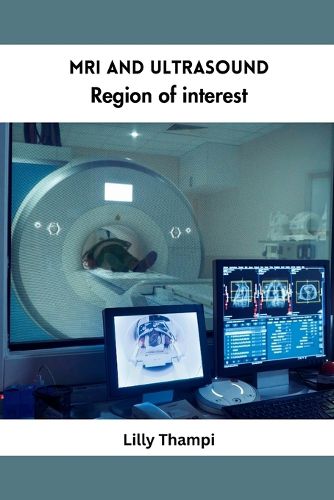Readings Newsletter
Become a Readings Member to make your shopping experience even easier.
Sign in or sign up for free!
You’re not far away from qualifying for FREE standard shipping within Australia
You’ve qualified for FREE standard shipping within Australia
The cart is loading…






This title is printed to order. This book may have been self-published. If so, we cannot guarantee the quality of the content. In the main most books will have gone through the editing process however some may not. We therefore suggest that you be aware of this before ordering this book. If in doubt check either the author or publisher’s details as we are unable to accept any returns unless they are faulty. Please contact us if you have any questions.
The region of interest (ROI) holds paramount significance in the realms of MRI (Magnetic Resonance Imaging) and ultrasound; two distinct yet complementary medical imaging techniques. In MRI; the ROI refers to the specific anatomical area or volume under scrutiny; meticulously chosen to unravel intricate details within the body. Renowned for its exceptional tissue differentiation and high-resolution capabilities; MRI excels in portraying soft tissues; organs; and intricate structures; proving invaluable in diverse applications like brain; musculoskeletal; and abdominal imaging.
Conversely; ultrasound showcases its prowess in real-time imaging; adeptly capturing dynamic processes within the chosen ROI using high-frequency sound waves. The ultrasound ROI pertains to the localized area that undergoes scrutiny; often targeted at fluid-filled regions and superficial structures. This modality boasts portability; safety due to lack of ionizing radiation; and its integral role in obstetric; cardiac; and abdominal imaging.
In both MRI and ultrasound; the selection of the ROI is guided by clinical objectives; patient history; and diagnostic requisites. These modalities cater to unique clinical scenarios; MRI; with its multi-planar precision and tissue contrast; delves deep into intricate anatomical zones; while ultrasound; with its immediate insights and non-invasive nature; excels in visualizing real-time activities and fluid-filled spaces. Collectively; these techniques epitomize modern medical imaging's diverse potential; offering a personalized approach to diagnosis and treatment through the judicious selection of the region of interest.
$9.00 standard shipping within Australia
FREE standard shipping within Australia for orders over $100.00
Express & International shipping calculated at checkout
This title is printed to order. This book may have been self-published. If so, we cannot guarantee the quality of the content. In the main most books will have gone through the editing process however some may not. We therefore suggest that you be aware of this before ordering this book. If in doubt check either the author or publisher’s details as we are unable to accept any returns unless they are faulty. Please contact us if you have any questions.
The region of interest (ROI) holds paramount significance in the realms of MRI (Magnetic Resonance Imaging) and ultrasound; two distinct yet complementary medical imaging techniques. In MRI; the ROI refers to the specific anatomical area or volume under scrutiny; meticulously chosen to unravel intricate details within the body. Renowned for its exceptional tissue differentiation and high-resolution capabilities; MRI excels in portraying soft tissues; organs; and intricate structures; proving invaluable in diverse applications like brain; musculoskeletal; and abdominal imaging.
Conversely; ultrasound showcases its prowess in real-time imaging; adeptly capturing dynamic processes within the chosen ROI using high-frequency sound waves. The ultrasound ROI pertains to the localized area that undergoes scrutiny; often targeted at fluid-filled regions and superficial structures. This modality boasts portability; safety due to lack of ionizing radiation; and its integral role in obstetric; cardiac; and abdominal imaging.
In both MRI and ultrasound; the selection of the ROI is guided by clinical objectives; patient history; and diagnostic requisites. These modalities cater to unique clinical scenarios; MRI; with its multi-planar precision and tissue contrast; delves deep into intricate anatomical zones; while ultrasound; with its immediate insights and non-invasive nature; excels in visualizing real-time activities and fluid-filled spaces. Collectively; these techniques epitomize modern medical imaging's diverse potential; offering a personalized approach to diagnosis and treatment through the judicious selection of the region of interest.